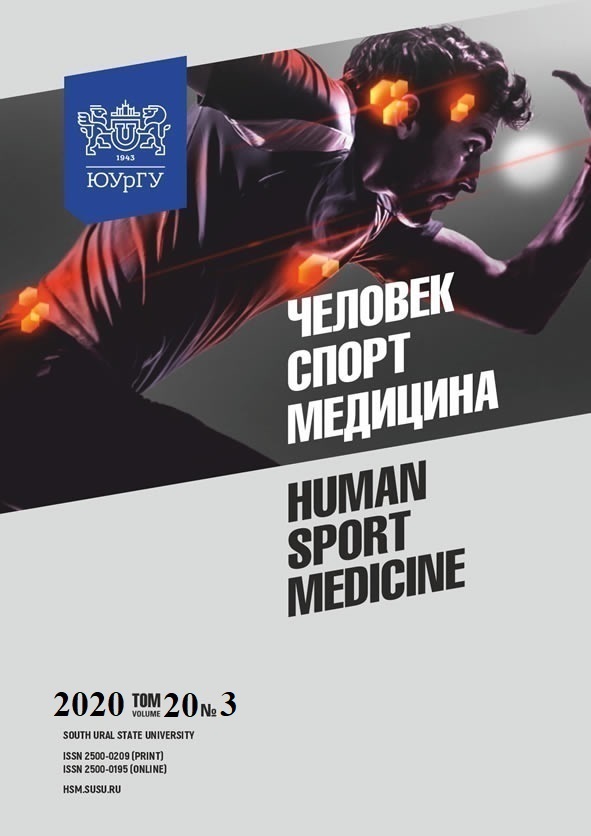MECHANISMS OF THE EFFECT OF TRADITIONAL MASSAGE ON CENTRAL AND PERIPHERAL CIRCULATION IN ADOLESCENT FEMALES INVOLVED IN RUNNING SPORTS
Abstract
Aim. The paper aims to analyze the effect of traditional massage on functional recovery of the cardiovascular system in adolescent females involved in running sports. Materials and methods. A 10-day traditional back and neck massage program was used as a recovery technique. The indicators of the central and peripheral circulation, the time and frequency characteristics of the heart rate, as well as finger pulse amplitude were obtained before and after the program.
Results. After traditional massage, adolescent females involved in running sports demonstrate a decrease in heart rate, which is associated with a decrease in sympathoadrenal regulation of chronotropic heart function (a decrease in VLF, a decrease in the amplitude of dominant VLF and LF harmonics). Regression and canonical analysis shows that heart rate dependence of the activity of regulation levels changes. There is an increase in peripheral blood circulation and a decrease in blood pressure associated with both humoral and metabolic factors and a decrease in sympathoadrenal influences, which is confirmed by an analysis of pulse amplitude variability. It is shown that the dynamics of the time and frequency characteristics of VLF range is a marker of physiological changes in blood circulation after massage therapy. Conclusion. The effect of traditional massage on the blood circulation of adolescent females involved in running sports is associated with adaptation to massage effects and is manifested by changes in the neurohumoral regulation of hemodynamics.
References
References on translit
Copyright (c) 2020 Human. Sport. Medicine

This work is licensed under a Creative Commons Attribution-NonCommercial-NoDerivatives 4.0 International License.















